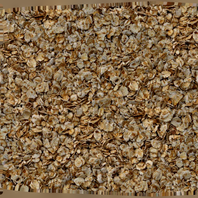Final Render
RBD assets textured in Substance Painter
Concept & Reference
Reference
Render
This project uses Rigid Body Dynamics to create a scene in a chocolate store. RBD helps easily instance and create natural dynamics for the assets. The reference stood out because of the variety and amount of geometry as well as the interesting textures.
I was inspired to do a chocolate store because of another project where someone did candy jar shelfs. It looked like a fun introduction to RBDs in Houdini as well as a good start for a Houdini to Substance Painter workflow.
Technical Guide
I made geometry for each of the different chocolates and made a separate RBD system for each type using the bullet solver. The chocolate is copied onto a box’s volume points. I adjusted the density, bounce, and friction parameters so the chocolates would not bounce or slide off each other as easily. I went through each RBD system and did a simulation. When there was a frame where the geo was settled and aesthetically pleasing, I cached out the geo as a bgeo and read them back in as geometry rather than a simulation.
I made geometry for each of the different chocolates and made a separate RBD system for each type using the bullet solver. The chocolate is copied onto a box’s volume points. I adjusted the density, bounce, and friction parameters so the chocolates would not bounce or slide off each other as easily. I went through each RBD system and did a simulation. When there was a frame where the geo was settled and aesthetically pleasing, I cached out the geo as a bgeo and read them back in as geometry rather than a simulation.

It was difficult to get the proper positioning for the chocolates since they should not be completely inside the container but arise from it while piling up on top of each other creating a soft pyramid shape. I found that changing the point configuration to tetrahedral versus grid created a more random and pyramidal layout.

I originally assigned a material to the geometry which rendered fine, but when I overrode the material’s base color, it would disappear. I understood that some errors were due to the improper packing and grouping of geometry. I also found that in the pack node there is a section to transfer attributes. When I added ‘material_override’ to the section, the overridden colors appeared. I also had a problem with workflow since I added the materials to the original geometry rather than the cached-out version. I had to resimulate and cache every time I changed a material or added a texture. I did not have enough time to change the workflow but learned the proper way for the future.
I did not know how to do a Houdini to Substance Painter workflow but eventually established one by using the File node to write out OBJs and import them into Substance. I also had a bit of a difficulty understanding the UV tools of Houdini. The tools used most for this specific project were UV Unwrap and UV Project. They did not result in the best UVs, so I fixed the odd seams in Substance Painter.













